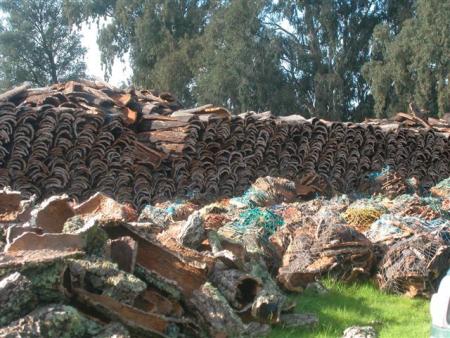
Objective:
The minimum interval between 2 successive cork extractions from the same tree is fixed by law as 9 years in Portugal. Postponing cork extraction to more than 9 years is an option that results (or not) in a variation of the cork price (for the same structure of cork prices). Site productivity, cork thickness and quality and discount rate contribute to the profitability of the farm, which may be evaluated, for example, by the equivalent annual annuity (EAA). The objective is to apply the SUBER model to evaluate the influence of the cork debarking rotation period (CDR) variation, from 9 to 11 years, on the EAA of different stands by analysing the opportunity to increase the market price of extracted cork.
Context:
Cork thickness helps the industrial classification for quality and determines cork price. Increased annual cork growth and/or CDR increases thickness. Landowners may postpone cork debarking to increase cork width and thus price.
Cork sampling and the SUBER model are management tools to estimate cork thickness and support forest managers in deciding the duration of CDR. Applying cork sampling results to initialise the model allows simulating cork thickness evolution in the coming years, followed by an economic analysis of the effect of postponing cork extraction, based on the EAA.
Contacts:
Joana Amaral Paulo, joanaap@isa.ulisboa.pt
Margarida Tomé, magatome@isa.ulisboa.pt
Further information:
Paulo, J. A., Tomé, M. 2017 Using the SUBER model for assessing the impact of cork debarking rotation on equivalent annual annuity in Portuguese stands. Forest systems. 26(1), e008, 11 pages. https://doi.org/10.5424/fs/2017261-09931